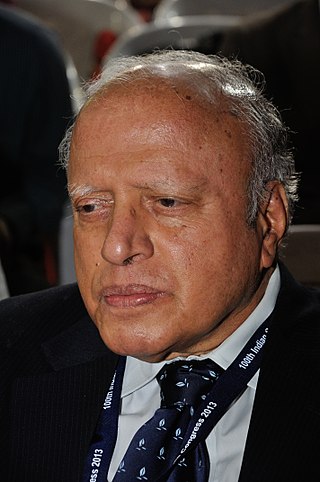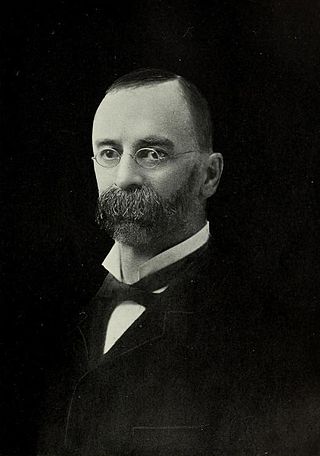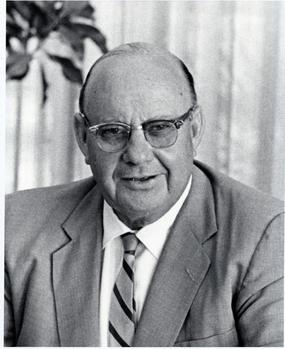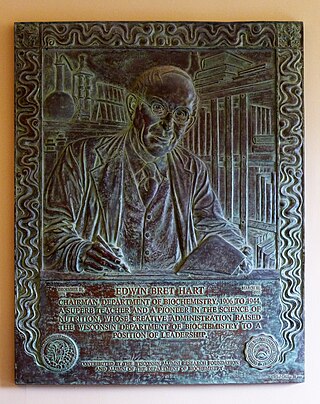
Mankombu Sambasivan Swaminathan is an Indian agronomist, agricultural scientist, plant geneticist, administrator and humanitarian. Swaminathan is a global leader of the green revolution. He has been called the main architect of the green revolution in India for his leadership and role in introducing and further developing high-yielding varieties of wheat and rice. Swaminathan's collaborative scientific efforts with Norman Borlaug, spearheading a mass movement with farmers and other scientists and backed by public policies, saved India and Pakistan from certain famine-like conditions in the 1960s. His leadership as Director General of the International Rice Research Institute (IRRI) in the Philippines was instrumental in his being awarded the first World Food Prize in 1987, recognized as the Nobel or the highest honours in the field of agriculture. United Nations Environment Programme has called him 'the Father of Economic Ecology'.

Stephen Moulton Babcock was an American agricultural chemist. He is best known for developing the Babcock test, used to determine butterfat content in milk and cheese processing, and for the single-grain experiment that led to the development of nutritional science as a recognized discipline.
William Vere Cruess was an American food scientist who pioneered the use of fruits to produce fruit-juice beverages, fruit-based concentrates and syrups. He was one of the first investigators in the United States to use freezing storage for preservation of fruits and fruit products. Cruess's research also proved beneficial in the rebirth of the wine industry in California after the repeal of Prohibition in 1933.

Elmer Verner McCollum was an American biochemist known for his work on the influence of diet on health. McCollum is also remembered for starting the first rat colony in the United States to be used for nutrition research. His reputation has suffered from posthumous controversy. Time magazine called him Dr. Vitamin. His rule was, "Eat what you want after you have eaten what you should."

Emil Marcel Mrak was an American food scientist, microbiologist, and second chancellor of the University of California, Davis. He was recognized internationally for his work in food preservation and as a world authority on the biology of yeasts.

The Institute of Food Technologists (IFT) is an international, non-profit scientific society of professionals engaged in food science, food technology, and related areas in academia, government and industry. It has more than 17,000 members from more than 95 countries.

Edwin Bret Hart was an American biochemist long associated with the University of Wisconsin-Madison.

The single-grain experiment was an experiment carried out at the University of Wisconsin–Madison from May 1907 to 1911. The experiment tested if cows could survive on a single type of grain. The experiment would lead to the development of modern nutritional science.

Samuel Cate Prescott was an American food scientist and microbiologist who was involved in the development of food safety, food science, public health, and industrial microbiology.

Carl R. Fellers (1893–1960) was an American food scientist and microbiologist who was involved in the pasteurization of dried foods and canning Atlantic blue crab.
Samuel Abraham Goldblith was an American food scientist. While involved in World War II, he studied malnutrition, and later was involved in food research important for space exploration.
Fred C. Blanck was an American food scientist who was involved in the founding of the Institute of Food Technologists (IFT) which was involved in the publishing of food and nutrition articles and books.
Maynard Alexander Joslyn was a Russian Empire-born, American food scientist who involved in the rebirth of the American wine industry in California following the repeal of Prohibition in 1933. Joslyn was also involved in the development of analytical chemistry as it applied to food, leading to the advancement of food chemistry as a scientific discipline.
Benjamin Borenstein was an American food scientist who was involved in vitamin fortification.
Fred Wilbur Tanner (1888–1957) was an American food scientist and microbiologist who involved in the founding of the Institute of Food Technologists (IFT) and the creation of the scientific journal Food Research.
Fred Ross Shank II was the Director of the Center for Food Safety and Applied Nutrition of the Food and Drug Administration for nearly ten years before he became Senior Advisor to the Commissioner for External Academic Affairs in January 1998. Before joining FDA in 1978, Shank performed program evaluations and served as a nutrition specialist with the Food and Nutrition Service for domestic food assistance programs at the U.S. Department of Agriculture. Shank earned his doctorate in nutrition at the University of Maryland, College Park. He has authored or co-authored numerous papers and has made many presentation on public health, nutrition and food safety. His best known work was the implementation of the Nutrition Labeling and Education Act in 1990. In 1994, he was the recipient of the Babcock-Hart Award.
Vishweshwaraiah Prakash is an Indian structural biologist, food technologist and a former director-general designate of the Council of Scientific and Industrial Research (CSIR). He is a former director of the Central Food Technological Research Institute (CFTRI), Mysore and was involved with the International Union of Food Science and Technology as the chairman of its International Academy during 2008-10. He received the Shanti Swarup Bhatnagar Prize, the highest Indian award in the science and technology category in 1996. The Government of India awarded him the fourth highest civilian honour of the Padma Shri in 2004,
Joseph H. Hulse (1923–2013) was a Canadian biochemist, food technologist, writer, and the president of the International Union of Food Science and Technology. He chaired the Committee of the Canadian chapter of the Freedom From Hunger, presided over the Canadian Institute of Food Science and Technology and was the assistant director of nutrition at the Food and Agriculture Organization, besides serving as the vice president of the International Development Research Centre (IDRC). He was the author of several texts and monographs on nutrition and allied sciences, including a 991-page treatise, Sorghum and the Millets: Their Composition and Nutritive Value. The Government of India awarded him the fourth highest civilian honour of the Padma Shri, in 2008, for his contributions to Science and for his humanitarian activities in India.

Steven R. Tannenbaum was born and grew up in the Rockaways of Queens, New York City. He attended the Hebrew Institute of Long Island through 9th grade, then moved to Hewlett, Long Island where he graduated from Woodmere H.S. in 1954. He attended the Massachusetts Institute of Technology from 1954-1962, earning a B.S. in Food Technology in 1958 and a PhD. in Food Science in 1962. He was then appointed to Assistant Professor in 1964 in the Department of Food Science and Technology leading up to Full Professor in 1974. Throughout his career he was mentored by Samuel A. Goldblith up until his death in 2001. In 1973 Tannenbaum did a sabbatical at the Hebrew University of Jerusalem, where he decided to switch his career into cancer research at the suggestion of Gerald Wogan.
Gail Monroe Dack was an American physician and professor of bacteriology, known as a leading expert on food-borne illnesses.








